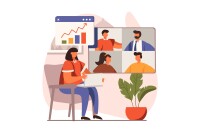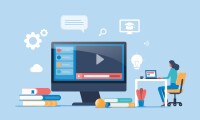Search
There are 7 results.
Improving PowerPoints
Sharing information via PowerPoint presentations is a long-established strategy in higher education. Designing PowerPoint presentations for online courses can pose unique challenges; however, best practices can help overcome these hurdles. With time and attention, faculty and instructional designers can create engaging and purposeful presentations with lasting value.
Updating Your Syllabus
Over time, you may want to make changes to the syllabus of a course. The syllabus documents are saved in the “Files” area (1) of the course. To preserve the integrity of the document, the Word document is located in the “Instructor Only” folder (3), and the PDF is found in the “Documents” folder (2) so it is visible to students.
Administrator Needs: Standardizing Elements of a Digital Learning Program
As an administrator or department chair, you are in a unique position to shape an online program and establish programmatic requirements or recommendations. This is because you have been tasked with taking a broader view of the program, focusing not only on individual course development (as a faculty member might) but also on how an array of courses must be cohesively united to achieve certain goals, values, and accreditation standards. To that end, this piece focuses on why consistency across a program is integral to program quality and student success, and therefore why it falls within your purview to consider standardizing certain elements, requirements, and design choices across all courses in a program.
Developing AI Literacy Across the Curriculum: A Guide for Programs and Faculty
The rapid integration of AI into professional practice across disciplines makes AI literacy increasingly crucial, not just for technology-focused fields but for all areas of study. Even faculty who are skeptical of AI's value need to consider how it's transforming their disciplines. For example, scientific fields are seeing AI adoption in literature reviews, experimental design, and data analysis. In the humanities, AI tools are already being used for textual analysis, translation, and content creation. Creative disciplines must grapple with AI's impact on artistic production and copyright. Professional programs face increasing pressure from employers who expect graduates to understand AI applications in their field.







